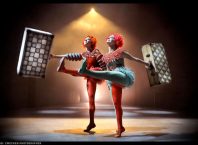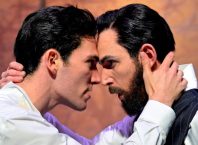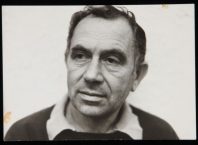Cultural luminaries convened in Jerusalem to share their knowledge, experiences, strategies, insight and ideas for the future in a panel on Cultural Tourism in a Global Museum World, which took place on March 30, 2011 at the first International Tourism Conference Jerusalem 2011. The session was moderated by Mr. James Snyder, Director of the Israel Museum, with opening remarks by Ms. Hanna Munitz, General Director of the Israel Opera Tel Aviv-Jaffa; a presentation by Mr. Massimo Andreoti, Cultural Consultant, Carnival of Venice, President of the C.E.R.S. – Consortium of European Re-enactment Societies; and a panel discussion with Mr. Thomas Campbell, Director, The Metropolitan Museum of Art, New York; Mr. Axel Rüger Director Van Gogh Museum, Amsterdam; Mr. James Cuno President, Art Institute of Chicago; and Dr. Mikhail B. Piotrovski Director, Hermitage Musuem, St. Petersburg.
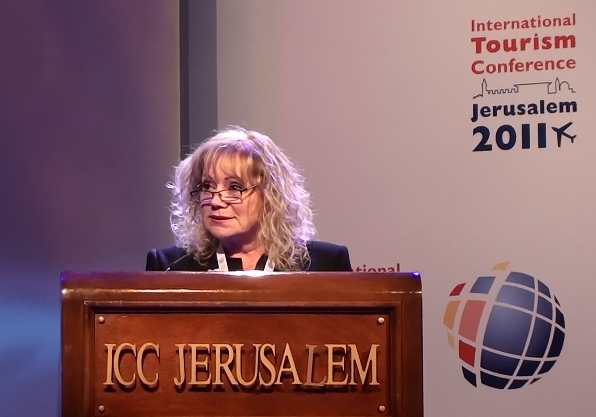
The presence of such leading cultural figures at the conference, is in itself an indication of Jerusalem and Israel’s inherent potential as a center of cultural activity and initiatives. The panel opened with a success story: Ms. Munitz recounted her experience of connecting a cultural event – the production of Verdi’s Nabucco – to an historical, archaeological site – Massada. Ms. Munitz said that the open-air opera festival, inaugurated last year by the Israel Opera together with the Ministry of Tourism and the Tamar Regional Council, was the “fulfillment of a dream, or rather of a vision.” She reported that “over 50,000 people came to the opera” of which she described 4,000 as “culture tourists” who came especially for this event, some visiting Israel for the first time. Recounting that during her travels, she has often seen historic and archeological sites utilized as venues for cultural events and festivals, Ms. Munitz said, “Israel has thousand year old historic and archeological sites; it is time to turn them into prospering cultural, economic and tourist assets.” In this sense, the Israeli Opera has set an example to emulate, as the successful open-air festival will extend its range this year to include a variety of performances in Jerusalem in addition to Verdi’s Aida at Masada.

Mr. Massimo Andreoti discussed the value of promoting cultural heritage in attracting tourism. Mr. Andreoti addressed the issue of historical sites, saying that these places of national heritage, which incur costs in their preservation, can be transformed into a resource. He described the concept of “tourism of memory” – visitors to a country “discovering the identity of others during a stay in their territory.” While acknowledging the fact that the world economic crisis has affected the availability of funds, Mr. Andreoti noted that the “Italian system used only 13% of the 28.8 billion” potentially available to them from the European Union, and said that it is important to “find a way to teach local bodies how to obtain funds.” Mr. Andreoti concluded with a proposal to set up a “Global Net of Cultural Tourism” based in Jerusalem to research and analyze these issues, connect between all the international organizations and facilitate the development of international cultural tourism.
The second portion of the session was devoted to a panel on “Museums as Cultural Venues.” In his introduction of the speakers, Mr. James Snyder, Director of the Israel Museum, noted that “three of the five were born in countries different from those of the museums they run,” reflecting the prevalent international perspective on culture.
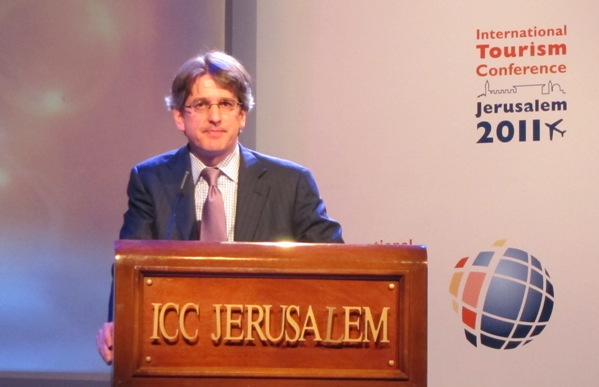
The significance of culture in relation to tourism was made clear by the first speaker, Mr. Thomas Campbell, Director of The Metropolitan Museum of Art, New York, who began by surveying the audience to see who had visited New York, and of those, who had visited the Met. The numbers spoke for themselves, many in the room had been to New York, and of those – all but five had visited the Met. In this regard, the Met is in an enviable situation, possessing one of the world’s encyclopedic collections, and located in a city which attracted, according to Mr. Campbell, 47.5 million tourists last year. Of those, Mr. Campbell reported, 29 million were cultural visitors. “We really speak to everybody wherever they come from,” said Mr. Campbell.
One might think that this is one museum that doesn’t need to invest in attracting visitors, yet this is precisely where one can learn from the Met’s experience. Despite their obvious advantages, a great deal of effort, thought and money is invested in promoting the museum. Mr. Campbell said, “We attend a host of international trade and tourist shows…have a manager of tourist marketing, produce printed and e-version brochures for the professional travel community…work to cultivate hotel concierges…” and are devoting more and more attention to the internet, which Mr. Campbell described as a “new frontier, the wild west.” He said that according to surveys conducted by the museum, 50% of the Met’s visitors go online before they visit, and 30% use the website to plan their visit. Noting that this is his first visit to Israel, Mr. Campbell said that “unquestionably the museum [the Israel Museum] made me want to come to Jerusalem.”
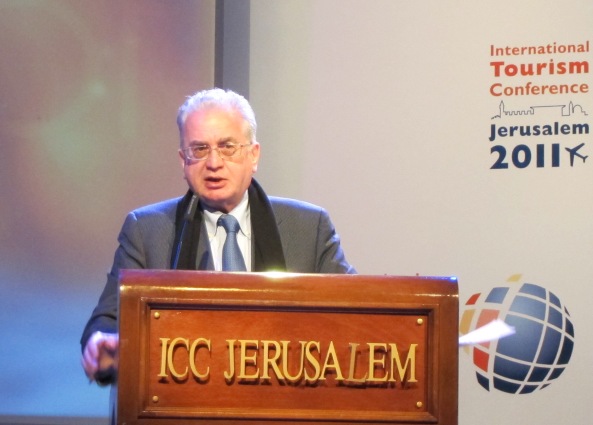
Dr. Mikhail B. Piotrovski, Director of the Hermitage Musuem, St. Petersburg, said that one crucial and common mistake made by many countries is “not investing enough in infrastructure.” Dr. Piotrovski emphasized the unique position museums hold in today’s digital world, saying, “Museums are about real things, people, objects, history – people feel this energy. It stands against the absolute virtuality of our lives.” The Hermitage possesses an enormous collection – an advantage that also poses challenges for museum directors in terms of display and storage. The Hermitage is addressing this challenge in an innovative way by developing new galleries of “open storage” as a special way of showing the museum collections. Among the challenges he sees for the Hermitage as well as other cultural venues are attracting young audiences to the museum and developing content that will provide visitors with enough to see and do for more than a one day visit, and changing content for people, such as business tourists, who are likely to return for a second visit.
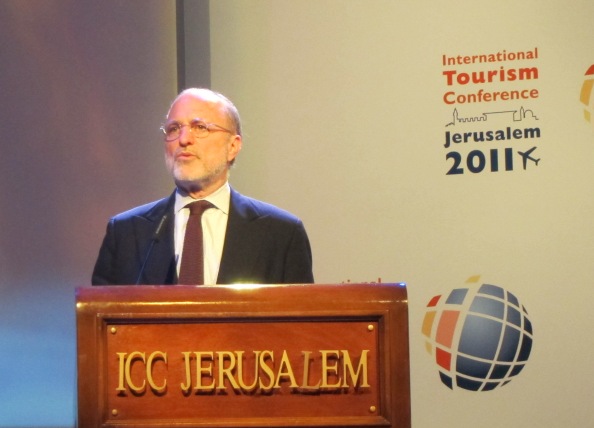
Mr. James Cuno, President of the Art Institute of Chicago, said that he represents a city which “offers a very different kind of tourist experience, “Chicago is the capital of the Midwest; that sounds like a desperately pathetic qualification – it’s not.” Mr. Cuno reported that the museum attracts about 1.5 – 1.8 million visitors each year, of which 10 – 15% are international, quipping, “the brave few who venture into the depths of the country.” Providing some background on the region for those less familiar, Cuno said that “historically the Midwest has been important to the development of the U.S. The last 50 years have not been kind to the Midwest…the term ‘dying’ has been used to describe Detroit – that is not the case with Chicago. Chicago has continuously reinvented itself.”
The Art Institute of Chicago is modeled after the museums of New York and Boston, as Mr. Cuno described: “situated in the heart of the city, open to all, part of a context of recreational park zone on Michigan Avenue, very accessible, centrally located – a vital part of city life.” In addition to international exhibit exchanges, the museum collaborates with other cultural institutions in the city such as the Chicago Symphony, the Opera, dance companies, and the Poetry Foundation. Mr. Cuno stressed that it is necessary “to continue to re-invest in the experience of the museum itself, to emphasize it as an experience.”
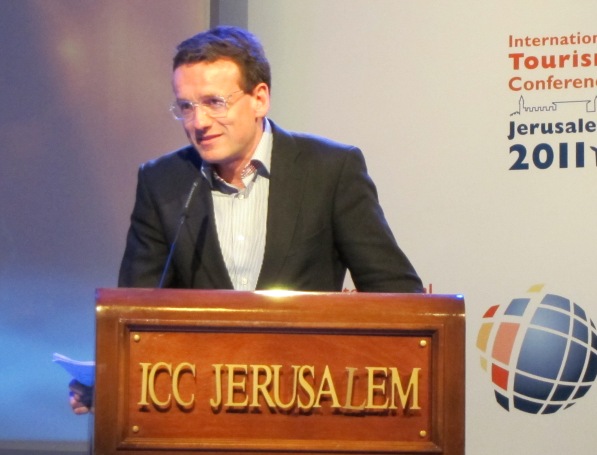
Mr. Axel Rüger Director of the Van Gogh Museum, Amsterdam said that for him, seeing the Israel Museum was “an overwhelming experience, also when elsewhere in the city, looking to the shining city on the hill, a beacon for a bright future.” As Mr. Rüger noted, there is “a slight difference in scale [from the other museums, the Van Gogh museum] could comfortably fit into one of the small pavilions of the Israel museum.” The museum houses the largest collection of works by Vincent Van Gogh, yet it is not a single artist museum, displaying the works of other artists of the period to show the artist’s work in context. The visitor profile is also very different from the other museums, with 80% foreign visitors. In terms of drawing tourists to Amsterdam, the challenge here is unique as well, for Amsterdam certainly attracts many visitors, as Mr. Rüger joked, for of “sex, drugs and rock and roll” – leaving museums and other organizations “struggling [with the question of] how to promote the city abroad.” One direction the museum may take in the future according to Mr. Rüger, is to “dig much deeper into the needs and expectations of visitors from different countries…to tailor our offerings to more specific focal groups.” Another aspect to develop is one mentioned by other museum directors – advance online ticket sales. People tend to complain about the long queues, yet, as Mr. Rüger said, “no one would expect to walk up to the opera or concert hall and say I want to go in now, yet everyone just walks up to the door [of a museum] and expects to get in.”
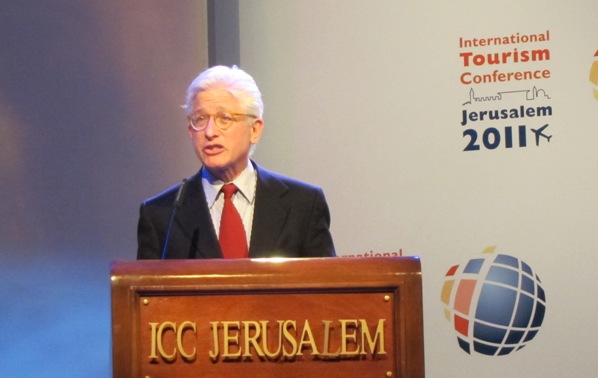
Mr. James Snyder represented the home team with warmth and humor, saying, “I know that if I ask how many of you have visited Jerusalem, I will win.” Mr. Snyder referred to the original vision of former Jerusalem Mayor Teddy Kollek, to create a museum for Jerusalem and Israel “on par with the great cultural capitals of the world.” The renewed campus has attracted many visitors since the official opening last summer, offering the benefit of what Mr. Snyder called “psychic currency for Israel, the twenty acres [of the museum campus] offer serene, calm, pure beauty” as compared to the typical Israeli scene which he described as “complex and cacophonous.”
Mr. Snyder then posed a provocative question to the distinguished panel: “Do we actually like tourists?” Mr. Campbell responded first, saying, “I think we all like tourists, they pay more at the shops and restaurants,” and said that the Met is revising their current tendency to “treat all of our visitors alike” and examining their assumptions about the knowledge with which visitors come to the museum, trying to develop new content that will address visitors arriving with different backgrounds. Dr. Piotrovski commented that in his country, “service is not a part of our national culture, we don’t like tourists enough,” a comment that appeared to resonate with the Israeli audience. Mr. Cuno spoke of the responsibility museums with encyclopedic collections have to “introduce visitors to the historic cultures of one another, providing them with what they can’t get at home.” Mr. Rüger said, “I adore and want to embrace every tourist who comes to Amsterdam,” but continued to say that many in his country “could not be more negative” towards tourists. He added with humor, “they may not be able to cycle as well as we do” and spoke of the need to “change attitudes” towards tourists.
The session was beautifully concluded by Ms. Lia Van Leer, founder of the Haifa Cinematheque, the Jerusalem Cinematheque, the Israel Film Archive and the Jerusalem Film Festival, who commented on the “sense of discovery” that a visitor feels when seeing a museum for the first time, saying that when she made her first visit to the renewed Israel Museum she felt that sense of discovery anew.
The International Tourism Conference Jerusalem 2011 was organized in association with the City of Jerusalem, The Jerusalem Development Authority, Ministry of Tourism of Israel, ICC Jerusalem International Convention Center, Israel Hotel Association, Israel Incoming Tour Operators Association, and Office of the Prime Minister. The event is an effort to initiate non-political dialogue illustrating and branding Jerusalem as an International tourist destination and convention center. , which took place from May 29 – 31, 2011 at the International Convention Center in Jerusalem (ICC).

